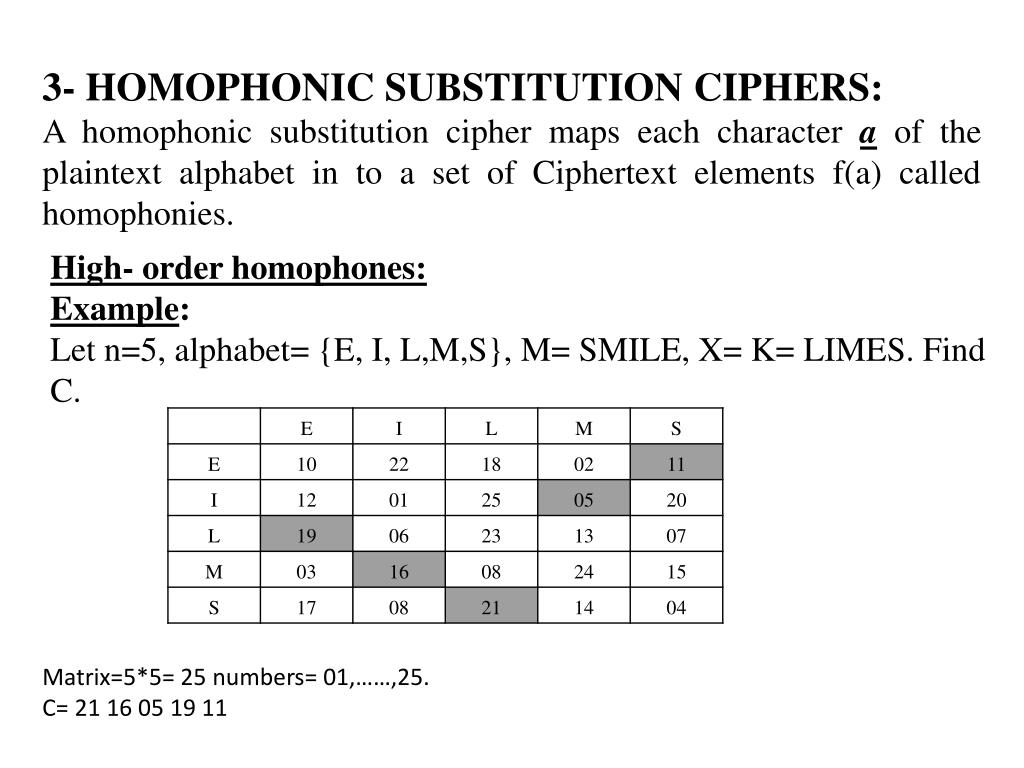

Thus, the plaintext "CALL" would correspond to the ciphertext "FBXX". Thus, the corresponding ciphertext would be F. If the key is 2, then 3 x 2 results in the number 6. So, to obtain the corresponding ciphertext of the letter C, which is the 3rd letter in the alphabet, we just multiply 3 with the key. If the resulting c value exceeds 26 (the number of letters in the alphabet), we just wrap around the beginning of the alphabet. Where p is the position of the plaintext letter in the alphabet, n is the key, and c is the position of the ciphertext letter in the alphabet. Instead of just counting n number of steps in the alphabet based on the key, let's run the key first through the mathematical expression: What if we don't like the cipher used earlier because we find it too simple? We could always create our own, right? Here's one. Note: This example shows why you shouldn't try to create your own cipher or encryption algorithm! :-) An attempt to create our own encryption algorithm If we use a different key, say 4 or 6, we would naturally get a different ciphertext.

Thus, when operated on by a substitution cipher with key = 3,īecomes the ciphertext: " Fdoo ph wrqljkw" If you need to go beyond Z, then just wrap around to the beginning of the alphabet. Notice how A will be repleced by D, B by E, T by W, and so on. If the key is 3, then we can obtain the ciphertext by using the guide below. The 'n' value, i.e., the number of positions to be counted after each plaintext letter, is known as the key. To get the ciphertext of the message "Call me tonight", we substitute each letter in the message with the letter positioned n places after it in the alphabet. The garbled message resulting from an encryption, on the other hand, is known as ciphertext. In encryption parlance, the original message, i.e., the message which people can understand, is called plaintext. Let's say you have a message that says: "Call me tonight" The substitution cipher is a very simple example of an encryption algorithm. Encryption algorithm example #1: The Substitution Cipher Note:Ciphers are also known as encryption algorithms, so we'll be using the terms "cipher" and "encryption algorithm" interchangeably throughout the article. To understand what I mean, let me give you an example. What is a cipher? A cipher is simply a method for encrypting (and decrypting) messages. So today, let's talk about the other component. We already discussed key lengths in an older post. The strength of an encryption largely depends on two components: 1) the cipher and 2) the length of the key.


 0 kommentar(er)
0 kommentar(er)
